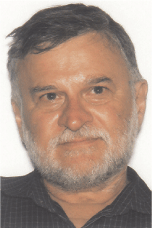Lower Paleozoic stratigraphy and petroleum potential of the Wallal Rift System, southwest Canning Basin, Western Australia
Norman Alavi A , Leon Bagas B , Peter Purcell C , Irena Kivior D and John Brett AA Geological Survey of WA, DMP.
B Centre for Exploration Targeting, University of Western Australia.
C P & R Geological Consultants Pty Ltd.
D Archimedes Consulting Pty Ltd.
The APPEA Journal 54(2) 521-521 https://doi.org/10.1071/AJ13094
Published: 2014
Abstract
The Wallal Rift System (new name) extends north-northwest for more than 300 km along the southwestern margin of the Canning Basin. The rift contains the Wallal and the Waukarlycarly embayments and the Samphire Graben. The rift segments vary in depth to 4.5 km and are all under-explored. Seismic coverage is better in the north than in the south. Six shallow wildcat and stratigraphic wells in the north provide some control on the age of the pre-Permian section. Another well on the northeastern flank of the Samphire Graben terminated in Neoproterozoic granitic rocks beneath the Lower Ordovician Nambeet Formation. The well is tied to a seismic line that indicates a synrift Ordovician section in the graben. An equivalent section is inferred in the Wallal and the Waukarlycarly embayments, and Permian syn-rift sediments are recognised in all rifts. Transtension along a regional geosuture—the Camel-Tabletop Fault Zone—may have caused initial rifting during the waning of the Paterson Orogeny (c. 550 Ma), co-incident with extrusion in the Kalkarindji Large Igneous Province. Thus, Cambrian volcano-clastics deposits may be present at the base of the (2–3 km thick) pre-Permian section, which is considered to be primarily Early Paleozoic sediments and expected to contain potential source rocks. A relatively hot Proterozoic crust and eruption of continental flood basalts during the Cambrian may have facilitated source rock maturation. Reservoirs may be more common along rift-margins and intra-rift ridges, where fault-controlled traps are also present.

Dr Alavi completed his postgraduate studies in marine geology and geophysics at the University of London (UK) in 1980. Before immigrating to Australia in 1989, he held academic positions in Libya and Turkey. In Australia, he worked at various organisations, mostly as a marine geologist/oceanographer, before joining the GSWA in 2008, working mainly on the petroleum geology of the southern Canning Basin. He is a member of PESA. |

Dr Bagas has over three decades of experience as a geologist at the Geological Survey of Western Australia and the Northern Territory Geological Survey. He is a research associate professor at the Centre for Exploration Targeting of the UWA, collaborating with the Geological Survey of Denmark and the ARC Centre of Excellence for Core to Crust Fluid Systems on various projects. He is a Fellow of SEG. Member: SGA and GSA. |

Peter Purcell is an Australian geologist with an MSc from the University of Sydney. He is general manager of P & R Geological Consultants Pty Ltd, with over 40 years’ experience working for international and Australian oil exploration companies in Australia, SE Asia and East Africa. He has edited several books on Western Australian geology, including the North West Shelf, and is the author of numerous articles on geology and petroleum exploration in Australia and East Africa, as well as environmental and aboriginal issues. |

Irena Kivior obtained her MSc engineering (1976) degree from the Academy of Mines and Metallurgy in Cracow and worked as a mathematician in Poland. In 1980, she migrated to Australia and until 1990 worked as a mineral and coal geologist. She then conducted research at the Adelaide University and was awarded a PhD in 1996. Her Postgraduate Research Fellowship (1996–1998) focused on sedimentary basin and deep crustal studies using potential field data. In 1997, she founded Archimedes Consulting, providing geophysical services for the petroleum industry, using proprietary techniques from her research. Member: AAPG, EAGE and SEG. |

John Brett is a geophysicist with extensive exposure to airborne geophysics and gravity data processing. He graduated from the University of Melbourne in 1985 and worked briefly in the petroleum industry, before becoming involved with airborne geophysical data processing. He has processed airborne and ground data for a wide range of industry and government organisations. He has also conducted training courses in the use of data processing and imaging software. |
References
Alavi, S.N., 2013—Structure, stratigraphy, and petroleum prospectivity of the Waukarlycarly Embayment, Canning Basin, Western Australia. Geological Survey of Western Australia, Record 2013/10.Archimedes Consulting PTY Ltd, 2007—Interpretation of aeromagnetic survey data, Canning Basin. Report prepared for ISIS–Australia. Open-file statuary petroleum exploration report P6448 A2, Geological Survey of Western Australia.
Bagas, L., 2005—Geology of the Lamil 1:100 000 sheet. Geological Survey of Western Australia, 1:100 000 Geological Series Explanatory Notes.
Foss, C., and Purcell, G.P., 2006—Structure and hydrocarbon prospectivity of the Waukarlycarly graben, West Australia. AAPG International Conference and Exhibition, Perth, Western Australia, 5–8 November 2006, Abstract.
Haines, P.W., 2004—Depositional facies and regional correlations of the Ordovician Goldwyer and Nita Formations, Canning Basin, Western Australia, with implications for petroleum exploration. Geological Survey of Western Australia, Record 2004/7.
Haines, P.W. (2010). The Carribuddy Group and Worral Formation, Canning Basin, Western Australia: Reassessment of stratigraphy and petroleum potential. APPEA Journal 50, 425–434.
Hunt Oil Company of Australia, 1997—Final Report, Waukarlycarly Seismic Survey Interpretation. Open-file statutory petroleum exploration report, S10316 A5, unpublished.
ISIS, 2007—SPA 1 06/7 Canning Basin WA, interpretation of seismic and well data for Global International (Australia) Pty Ltd, ISIS Petroleum Consultants Pty Ltd. Open-file statutory petroleum exploration report P642300 A2, unpublished.
Mory, A.J., 2010—A review of mid-Carboniferous to Triassic stratigraphy, Canning Basin, Western Australia. Geological Survey of Western Australia, Report 107.
Pirajno, F., and Hoatson, D.M. (2012). A review of Australia’s Large Igneous Provinces and associated mineral systems: Implications for mantle dynamics through geological time. Ore Geology Review 48, 2–54.
Purcell, P.G., and Poll, J., 1984—The seismic definition of the main structural elements of the Canning Basin. In: Purcell, P.G., (ed.) The Canning Basin, WA. Proceedings of the Canning Basin Symposium. Geological Society of Australia and Petroleum Exploration Society of Australia, Perth, WA, 73–84.
Roach, I.C. (ed), 2010—Geological and energy implications of the Paterson Province airborne electromagnetic (AEM) survey, Western Australia, Geoscience Australia, Record 2010/12.
Romine, K.K., Jackson, M.J., Kennard, J.M., Shaw, R., and Southgate, P.N. 1994—Ordovician to Silurian phase of the Canning Basin WA. In: Purcell, P.G., and Purcell, R.R., (eds) The Sedimentary Basins of Western Australia. Proceedings of Petroleum Exploration Society of Australia, The Western Australian Basins Symposium, Perth, WA, p.677–696.
Shaw, R.D., Sexton, M., and Zeilinger, I., 1994—The tectonic framework of the Canning Basin, WA, including 1:2 million structural elements map of the Canning Basin: Australian Geological Survey Organisation, Record 1994/48.
Shell Development (Australia) PTY Ltd, 2000—Seismic interpretation report, Survey 98c, permit E-353, Canning Basin (1998 Great Sandy 2D Seismic Survey). Open file statutory petroleum exploration report S10372, Geological Survey of Western Australia.
SRK Consulting PTY Ltd, 1998—Canning Basin Project, 1998. Report prepared for Shell Development (Australia) Pty Ltd. Open-file statutory petroleum exploration report S6353R1A5, Geological Survey of Western Australia.


